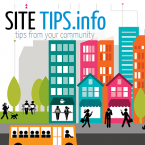(BPT) - Now more than ever, first-time homebuyers are dialed into the interest rate environment and what it means for purchasing a house. That's why many experts advise that buyers "marry the home and date the rate" - in other words, buy a house you love and at a price you can afford with the option of refinancing if there's a better rate in the future.
Beyond mortgage rates, buyers also have to weigh home prices, insurance premiums, property taxes and even their own financial readiness to take on homeownership. However, not everyone can afford to wait around for the perfect scenario to buy a home.
"Whether it's because of a new job, a major life change or seeking a new school district, we see people needing to move for all kinds of reasons," said Ana Munoz, Senior Home Lending Advisor for Chase Home Lending. "Instead of focusing on the rates, it can be helpful for borrowers to focus on what they can control, which is their financial preparedness. If you feel ready to take on the costs of homeownership, it's important to meet with a mortgage professional to understand your options."

Whether you're just starting your homebuying journey or are ready to buy this summer, the experts at Chase Home Lending offer these tips on prepping to buy a home:
Explore educational resources: Consumers planning to purchase a home, particularly first-time buyers, should start by educating themselves on the homebuying process. It's easy to feel like you're in over your head because you don't know what you don't know. Luckily, there are resources available to help boost your homebuying knowledge such as webinars, podcasts and articles, like the Chase Beginner to Buyer Podcast.
Determine when the time is right: Understand your needs and wants for homeownership, and what will best fit with your lifestyle and budget. Consider additional costs including property taxes, home maintenance and more, along with the advantages - like building home equity - to determine if it's the right time for you to buy.
Understand the upfront costs of homeownership: Affordability is still top of mind for prospective homeowners, especially for first-time buyers. The upfront costs of homeownership, such as closing costs, a down payment and fees, may catch some buyers off guard. Online tools like an Affordability Calculator can help you determine how much you can afford.
To feel better prepared, borrowers can research and review homeowner and down payment assistance programs and grants they may be eligible for to address the initial costs of owning a home. A great tool to help you right from your phone or computer is Chase's Homebuyer Assistance Finder, which helps borrowers find all the assistance they might be eligible for.

Work with trusted professionals: Before you begin your home search, consult a home lending professional. They can help you get preapproved, navigate the local homebuying market and review loan options. It can also be worthwhile to check with your bank since many offer discounted rates to eligible borrowers, so be on the lookout for your bank's relationship pricing options.
Lock in your rate: Interest rates can rise and fall quickly. Being able to lock in an interest rate with a lender can give you assurance of how much you'll pay in interest for your home loan. For example, Chase offers their Homebuyer Advantage with Lock and Shop, which lets you shop with confidence because you've locked in your interest rate.
Bonus: Common misconceptions about homeownership
There are a few misconceptions about buying a home that may be keeping some prospective buyers on the sidelines. Here, we break down what's myth vs. fact about homebuying:
- Misconception 1: You have to put 20% down.
Fact: Some loan types offer low down payment options, such as FHA and VA loans. Check out Chase's DreaMaker Mortgage, which may allow borrowers to put down as low as 3%. - Misconception 2: All lenders offer the same high interest rates.
Fact: Interest rates may vary by loan type and lender. Check with more than one lender, consider all the upfront costs of getting a mortgage and lock in your rate for added confidence during the homebuying process. - Misconception 3: I'm not eligible for any assistance programs.
Fact: There are assistance programs at the local, state and national levels to support homebuyers on their path to homeownership. - Misconception 4: Banks don't close on time.
Fact: If you're buying a new home or investment property, you may be eligible for the Chase Closing Guarantee. Chase promises on-time closing for eligible products in as soon as three weeks or you'll get $5,000, if you qualify. Plus, homeowners may be able to save more and tap into discounts when using a bank like Chase versus a nonbank.
Ready to start planning for your dream home? Visit Chase.com/afford.
For informational/educational purposes only: Views and strategies described in this article or provided via links may not be appropriate for everyone and are not intended as specific advice/recommendation for any business. Information has been obtained from sources believed to be reliable, but JPMorgan Chase & Co. or its affiliates and/or subsidiaries do not warrant its completeness or accuracy. The material is not intended to provide legal, tax, or financial advice or to indicate the availability or suitability of any JPMorgan Chase Bank, N.A. product or service. You should carefully consider your needs and objectives before making any decisions and consult the appropriate professional(s). Outlooks and past performance are not guarantees of future results. JPMorgan Chase & Co. and its affiliates are not responsible for, and do not provide or endorse third party products, services, or other content.
Deposit products provided by JPMorgan Chase Bank, N.A. Member FDIC. Equal Opportunity Lender.
© 2025 JPMorgan Chase & Co.
